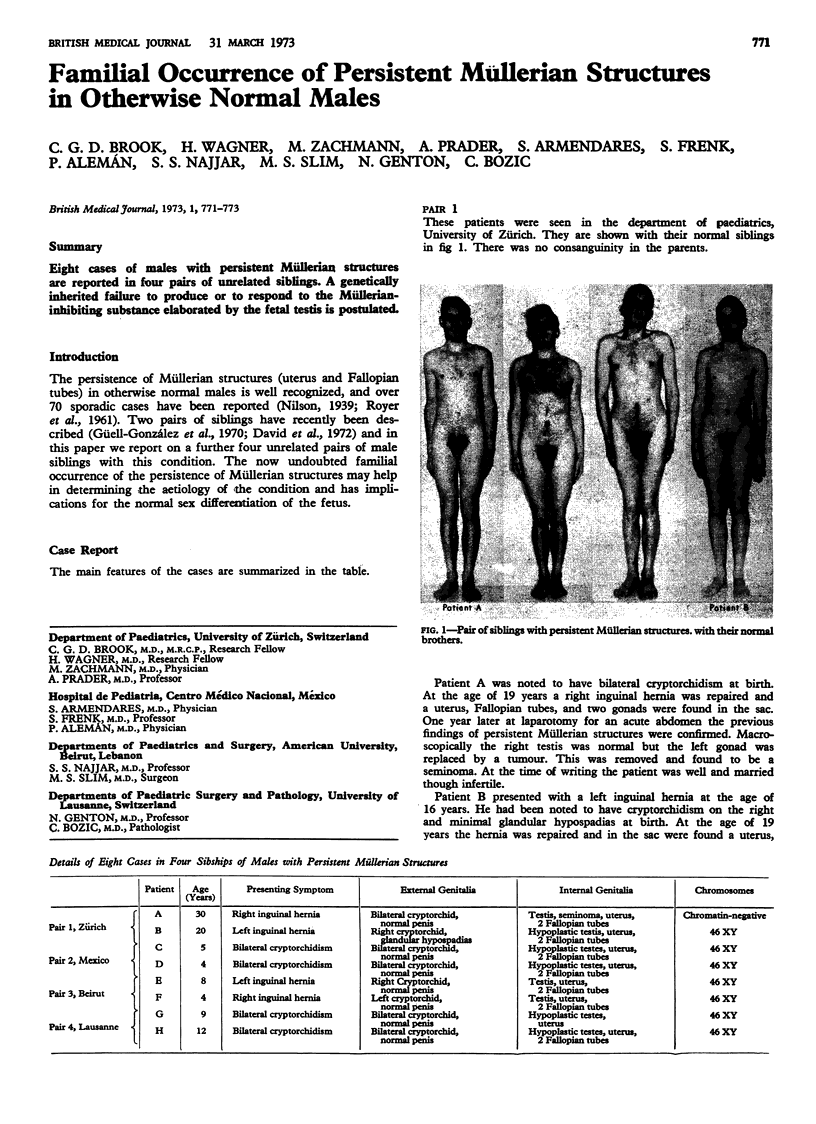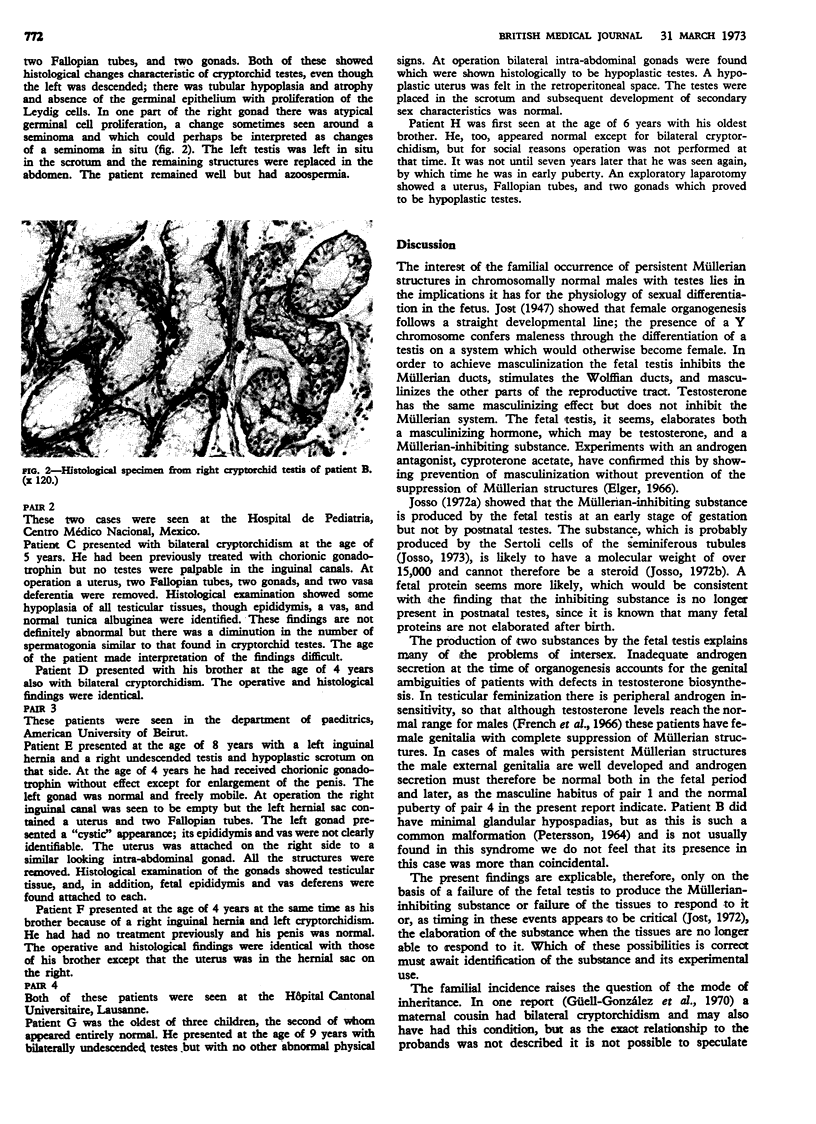Abstract
Eight cases of males with persistent Müllerian structures are reported in four pairs of unrelated siblings. A genetically inherited failure to produce or to respond to the Müllerian-inhibiting substance elaborated by the fetal testis is postulated.
Full text
PDF


Images in this article
Selected References
These references are in PubMed. This may not be the complete list of references from this article.
- BOULVIN R. A PROPOS DE TROIS CAS DE PSEUDOHERMAPHRODISME MASCULIN INTERNE CHEZ L'HOMME. Ann Chir. 1964 Oct;18:1340–1342. [PubMed] [Google Scholar]
- French F. S., Van Wyk J. J., Baggett B., Easterling W. E., Talbert L. M., Johnston F. R., Forchielli E., Dey A. C. Further evidence of a target organ defect in the syndrome of testicular feminization. J Clin Endocrinol Metab. 1966 May;26(5):493–503. doi: 10.1210/jcem-26-5-493. [DOI] [PubMed] [Google Scholar]
- Josso N. Evolution of the Müllerian-inhibiting activity of the human testis. Effect of fetal, peri-natal and post-natal human testicular tissue on the Müllerian duct of the fetal rat in organ culture. Biol Neonate. 1972;20(5):368–379. doi: 10.1159/000240479. [DOI] [PubMed] [Google Scholar]
- Josso N. Permeability of membranes to the Müllerian-inhibiting substance synthesized by the human fetal testis in vitro: a clue to its biochemical nature. J Clin Endocrinol Metab. 1972 Feb;34(2):265–270. doi: 10.1210/jcem-34-2-265. [DOI] [PubMed] [Google Scholar]
- PETTERSSON F. MECLOZINE AND CONGENITAL MALFORMATIONS. Lancet. 1964 Mar 21;1(7334):675–675. doi: 10.1016/s0140-6736(64)91510-7. [DOI] [PubMed] [Google Scholar]
- ROBINSON J. N., ENGLE E. T. Some observations on the cryptorchid testis. J Urol. 1954 Jun;71(6):726–734. doi: 10.1016/S0022-5347(17)67852-2. [DOI] [PubMed] [Google Scholar]
- Salle B., Hedinger C., Nicole R. Significance of testicular biopsies in cryptorchidism in children. Acta Endocrinol (Copenh) 1968 May;58(1):67–76. doi: 10.1530/acta.0.0580067. [DOI] [PubMed] [Google Scholar]
- TAUB J. Malignant testis tumor, cryptorchidism and polyorchidism in a pseudohermaphrodite. J Urol. 1954 Apr;71(4):475–482. doi: 10.1016/S0022-5347(17)67812-1. [DOI] [PubMed] [Google Scholar]
- YOUNG D. Hernia uteri inguinalis in the male. J Obstet Gynaecol Br Emp. 1951 Oct;58(5):830–831. doi: 10.1111/j.1471-0528.1951.tb04065.x. [DOI] [PubMed] [Google Scholar]




